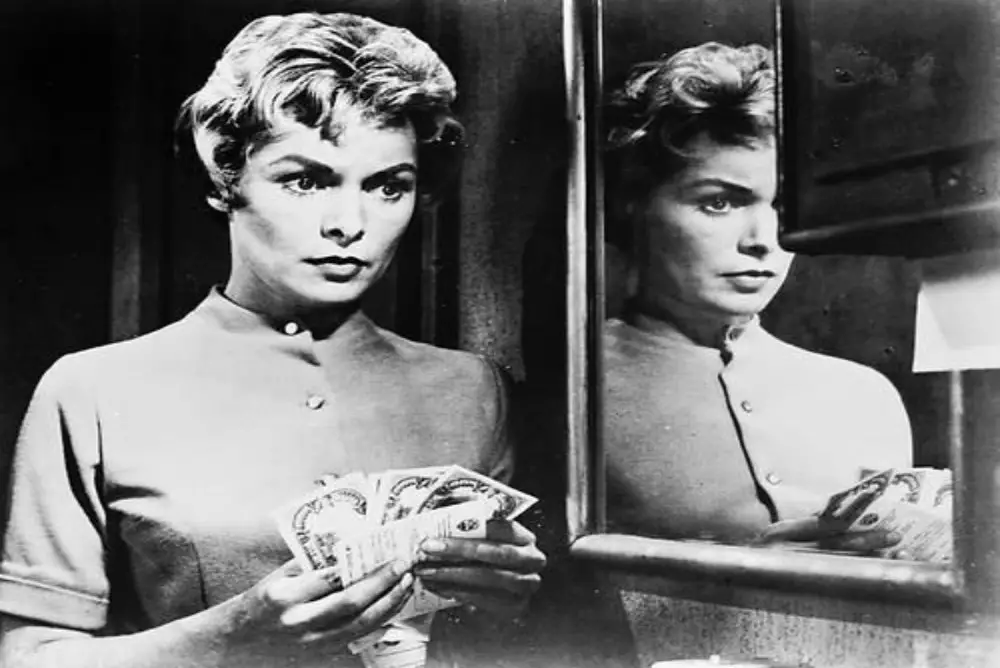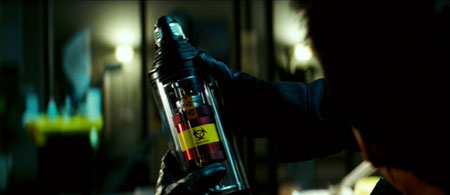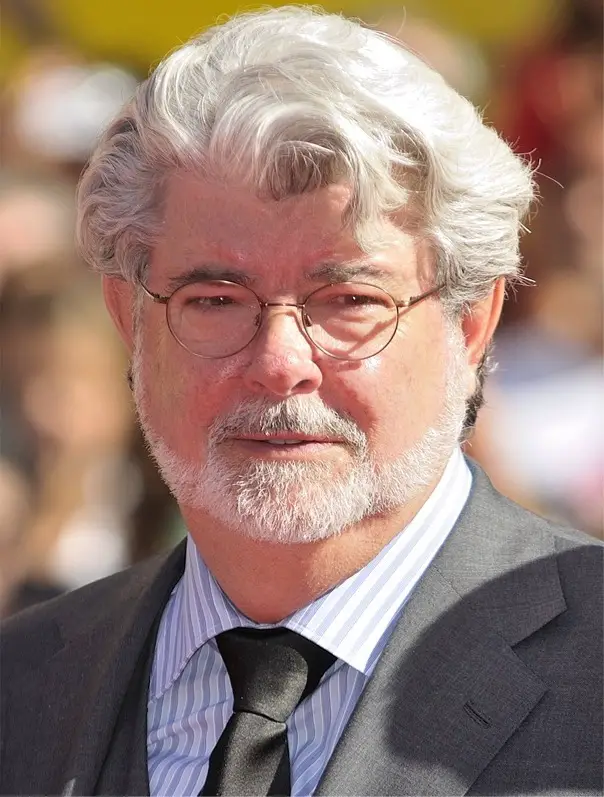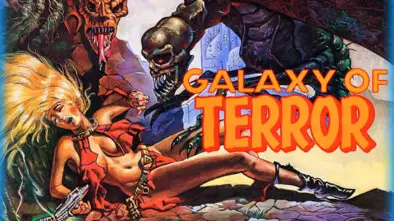What Is A MacGuffin? An Explanation of Film’s Most Mysterious Plot Device
What is a MacGuffin? It’s perhaps the most mysterious plot device in film. The MacGuffin (sometimes spelled McGuffin) is often misunderstood, and can be a lazy way to push the plot forward. But in the hands of a master, it can be used to create a clever and intricate narrative.
Alfred Hitchcock, the Master of Suspense himself, popularized the term. And ever since, the MacGuffin has been an integral part of numerous films. This doesn’t mean everyone agrees with Hitchcock’s use of the MacGuffin, or even it’s definition. As we’ll see, directors like George Lucas and James Cameron have used the MacGuffin in different and interesting ways.
So far I haven’t helped in demystifying the MacGuffin. For that we’ll first turn to Hitchcock.
What Is A MacGuffin According To Alfred Hitchcock?
Hitchcock described the “MacGuffin” as “the thing that the characters on the screen worry about, but the audience doesn’t care.” In Hitchcock’s day, the “MacGuffin” usually featured in spy thrillers. It’s what the spies were after. The “MacGuffin” is the mysterious object that sets the whole chain of events of a film in motion.
It drives the plot forward, but curiously it’s not what a film is about. By Act III, the MacGuffin typically fades in importance.
According to Hitchcock the best MacGuffins are as vague and meaningless as possible. It’s even better if it is also absurd.
If you look at Hitchcock’s The 39 Steps, which is one of Hitchcock’s pure spy thrillers, the MacGuffin is the plans for an airplane engine, stored in the mind of a vaudeville performer named “Mr Memory.” It motivates the characters into action, and occupies their attention throughout. But the protagonist only covets the plans to clear his name and survive, which is what the film is really about.
Another example of a “pure MacGuffin” is the money that motivates Marion Crane’s actions in Psycho. But it’s more misdirection than anything else. Crane, the principal character in the early part of the film, is suddenly killed by a psychopath in the infamous shower scene less than halfway through the story. From there, the money is all but forgotten, and the audience’s concern shifts to a homicidal maniac who dresses as his mother.

The $40,000 Marion Crane stole in Psycho is the MacGuffin. But when she is suddenly murdered the audience forgot about the MacGuffin and focused their attention on the psychopath who dressed as his mother.
For Hitch, his favorite MacGuffin is the government secrets he used in North By Northwest. This is how Hitchcock explained the film’s MacGuffin in his 1962 interview with Francois Truffaut:
My best MacGuffin, and by that I mean the emptiest, the most nonexistent, and the most absurd, is the one we used in North by Northwest. The picture is about espionage, and the only question that’s raised in the story is to find out what the spies are after. Well, during the scene at the Chicago airport, the Central Intelligence man explains the whole situation to Cary Grant, and Grant, referring to the James Mason character, asks, “What does he do?” The counterintelligence man replies, “Let’s just say that he’s an importer and exporter.” “But what does he sell?” “Oh, just government secrets!” is the answer. Here, you see, the MacGuffin has been boiled down to its purest expression: nothing at all!
The government plans in North By Northwest are so empty, and “non-existent” that they could be replaced by any other object and still not interfere with the plot of the film and the actions of the characters. The MacGuffin is interchangeable. Hitchock emphasized this key trait when he explained to a disgruntled producer the process behind his selection of a wine bottle filled with Uranium sand as the MacGuffin in his 1944 film, Notorious.
I told him that it wasn’t the basis for the story, but only the MacGuffin, and I told him that there was no need to attach too much importance to it. Finally I said, ‘Look, if you don’t like Uranium, let’s make it industrial diamonds, which the Germans need to cut their tools with’. And I pointed out that if it had not been a wartime story, we could have hinged our plot on the theft of the diamonds, that the gimmick was unimportant.
Hitchcock popularized MacGuffins, but didn’t create them. According to Donald Spoto in ‘The Art of Alfred Hitchcock’, Hitch’s screenwriter, Angus MacPhail, coined the term. But the device goes even further back to at least the literature of Rudyard Kipling. The important part of the word is “guff” which means a load of nonsense. As Spoto wrote: “Watch out for the MacGuffin. It will lead you nowhere.”
Of course, plenty of non-Hitchcock films feature a MacGuffin like the falcon statue in The Maltese Falcon and the letter of transit in Casablanca. A more recent example is the mysterious Rabbit’s Foot in Mission: Impossible III.
Mission: Impossible III is a great modern example because it is a spy thriller, and the Rabbit’s Foot follows Hitchcock’s guidelines fairly closely. Agent Ethan Hunt (Tom Cruise) is preoccupied with stopping villain Owen Davian (Philip Seymour Hoffman) from using it. But we never know what it is, nor does Ethan Hunt. It could be a virus or a secret tech. The only explanation we get is from Benji (Simon Pegg) partway through the film (see this clip below):
The Rabbit’s Foot, which Benji likens to the “Anti-God”, is a great MacGuffin. But it’s not what Mission: Impossible III is really about. For Ethan Hunt, it’s about whether he can be an agent and have a life. Can he marry the woman he loves, and be a secret agent? Or will she be perpetually in danger? It’s also interchangeable. Because the Rabbit’s Foot could be almost anything, replacing it with something else would require little, if any, alteration to the plot.
The briefcase in Pulp Fiction is another more modern example of a classic Hitchcockian MacGuffin. It’s the object every character in the film covets. Here the characters do know what’s inside the briefcase, but nobody in the audience ever knows its contents. What is meaningless to us, is important to the characters. Quentin Tarantino followed Hitchcock’s definition of the MacGuffin pretty closely. But even though he wrote and directed Pulp Fiction, Tarantino stated he has no clue what’s inside the briefcase either. Thus, the briefcase could also be replaced without altering the storyline.
If you watch these movies, you’ll note that often characters will ask: “What is it?” It’s a question that reinforces the mysterious nature of the plot device. (Or they ask something similar like “What does he sell?” as seen in North By Northwest). The answer is usually pretty empty telling us nothing about the MacGuffin. Some characters may know what it is but they’ll never let on to the audience. But often the protagonist, like Ethan Hunt in Mission: Impossible III, will have no clue what the MacGuffin is either. Even at the film’s conclusion.

The Rabbit’s Foot from Mission: Impossible III
What Is A MacGuffin According To George Lucas?
Not everyone agrees with Hitchcock’s definition of the MacGuffin. George Lucas believes the MacGuffin works best when it is so powerful that the audience cares about it almost as much as the characters on screen. Lucas described R2-D2 as a MacGuffin in Star Wars: A New Hope. R2-D2 is the cute little droid that both the Empire and the Rebellion are after. The audience knows who he is, and they come to care about him just as much as the human characters. The Empire and Rebellion race to get their hands on the Death Star plans which reside inside the astromech droid. In fact, the Death Star plans are a MacGuffin too.
Caring about the MacGuffin leads to greater investment in the story and the hero’s quest.

George Lucas believes the MacGuffin works best when it’s so powerful that the audience cares about as much as the characters.
This can be seen from a different perspective in Lucas’ other franchise, Indiana Jones. The MacGuffins are the artifacts our intrepid archaeologist seeks before agents of evil like the Nazis, Soviets, or Kali worshipers can use them for nefarious purposes. Here, the religious, mystical power of the artifact enhances its mysterious nature as the MacGuffin.
For instance, in Raiders of the Lost Ark, the Ark of the Covenant is known to the audience. It isn’t just nondescript government plans used in North By Northwest, or some mystery world-ending tech like the Rabbit’s Foot in Mission Impossible III. Rather, the audience knows how powerful the Ark is, and why it is important to recover it.
Compare Indy’s discussion about the Ark of the Covenant below, with Benji’s discussion about the Rabbit’s Foot above to see the distinct difference between a pure Hitchcock MacGuffin and the one Lucas uses in his films.
As you can see with both Star Wars: A New Hope and Raiders of the Lost Ark, Lucas often has more than one MacGuffin in a film. It’s not original as even Hitchcock did this with The 39 Steps. We’ve discussed how the absurd airplane plans in the memory of a vaudeville entertainer was one, but the actual 39 steps themselves are also another. What Lucas does differently is to combine MacGuffins in ways that make the film more exciting or raise the film’s stakes. The Death Star plans are what the Empire and the Rebellion need. By placing them inside R2-D2, Lucas makes the droid a MacGuffin too. He then makes the climax more dramatic by placing R2-D2 into a position where the audience believes he’s sacrificed his life for the Death Star plans.
For the first two acts, R2-D2 carried the Death Star plans. At the second plot point, which signals the transition into Act 3, R2-D2’s purpose changes. The Rebels remove the plans he’s carrying and analyze them to determine a weakness they can target in the Death Star. Now, R2-D2 serves as Luke’s co-pilot as part of the assault on the Empire’s space station. By doing this, Lucas places R2-D2 in the middle of the danger and raises the emotional stakes even more in the film’s climax.
When Luke Skywalker hurtles down the Death Star’s trench targeting the two-foot-wide exhaust port (the weakness), Darth Vader fires a laser blast that narrowly misses Luke’s X-Wing fighter but blows a hole in the top of R2-D2’s head. It’s a tense moment for Luke and the audience. The stakes rise as Luke has to focus to hit that tiny target and save the Rebellion from certain destruction. Even though Luke succeeds in destroying the Death Star, the audience is still tense about little R2. It’s only in the final frames of the film when they get ultimate relief after a newly repaired R2-D2 makes his appearance just before the closing credits.
In a similar fashion, Lucas uses the mysterious Staff of Ra to raise the stakes in Raiders. The staff is the artifact Indiana Jones has to first obtain in Nepal, and then smuggle into the map room at Tannis in Cairo to then use to locate the Ark. It adds even further mystery and excitement to the quest and the Ark itself.
But even with this elaborate use of MacGuffins, they ultimately follow Hitchcock’s main purpose for a MacGuffin. In the end, the Ark of the Covenant and the Death Star plans turn out to be plot devices that are not what the films are essentially about. In Star Wars, the importance lies in the human themes of friendship, family, and freedom, and humanity versus technology. In Raiders, Indy ultimately loses the Ark to the American government. But once the Nazis are thwarted, he realizes his relationship with Marion is more important. This realization occurs in the final moments of the film.
Human Characters As MacGuffins
We’ve discussed how a cute astromech droid can be a MacGuffin, but so can humans. Private Ryan from Saving Private Ryan, Leeloo from The Fifth Element, and John Connor from Terminator 2 are all MacGuffins. Typically they exist off camera for Act 1, as ideas to drive the plot. But when we meet the characters, often the idea we had about them and the film is challenged or undermined. The focus then shifts to a larger mission or a new objective. In John Connor’s case, he is an idea that exists off camera for the first film in the Terminator franchise. His mother, Sarah Connor is targeted by a Cyborg (the Terminator) from the future. The drive of the Terminator is to kill her before she conceives and gives birth to John Connor, the future leader of the Resistance. He is a messianic figure who will lead Humanity to victory against “the Machines” (or Terminators). Conversely, Kyle Reece, is sent from the future by an adult John Connor to protect Sarah Connor from the Terminator, and ultimately it is he, who fathers John.
In the follow-up, Terminator 2: Judgement Day, we meet John for the first time. He is a teenage boy who is once again the MacGuffin, or plot driver. He is targeted directly by a new and improved Terminator called the T-1000, and protected by an older model, who happens to look exactly like the previous Terminator sent to kill his mother.

John Connor in Terminator 2: Judgement Day
But he is far from the messianic figure we are led to believe. He steals cash from ATMs, and generally partakes in criminal activity. He also has a difficult relationship with his mother, who is more concerned with the idea of John as Humanity’s savior, than as a normal boy wanting to connect with his mother. Thus, our idea of John as savior is challenged.
As we get to know John, the objective shifts from just saving him, to destroying SkyNet, the program that will lead to the rise of the Machines and Humanity’s post-apocalyptic future.
While it is Sarah Connor who is the main protagonist, and who goes through an extraordinary transformation in both films, John is a fully-fledged protagonist himself in the second film. Thus, his importance to the story is beyond just being a MacGuffin.
Both James Cameron’s use of John Connor as a MacGuffin and the increased importance George Lucas places on the MacGuffin depart, in many respects, from the plot device used by Alfred Hitchcock. There is much debate on what can and cannot be considered a MacGuffin. Many argue whether filmmakers like George Lucas and James Cameron can come along and redefine–or more accurately–evolve the concept of the MacGuffin beyond Hitchcock’s definition.
Hitchcock’s MacGuffin is absurd, non-descript, and interchangeable. It can be exchanged with another device without altering the plot. Lucas’s MacGuffin, however, is well-understood by the audience, and often the audience has an emotional investment in it. Either it’s a character like R2-D2, or it is needed to resolve the story. In the first half of Raiders, the Ark of the Covenant is the thing that Indy and Marion are after, which is very much like a traditional MacGuffin. But as the film progresses it becomes more important and, unlike a Hitchcockian MacGuffin, the Ark does not fade in importance during the third act. By the climax, Indy is aware that you cannot look upon the Ark when it is opened. He and Marion close their eyes when the Nazis open it. But it is the power of the Ark that defeats and destroys the Nazis, not Indy.
Nonetheless, whether the object is something as non-descript or vague as the Rabbit’s Foot, a falcon statue, and a briefcase, or as meaningful as the Ark of the Covenant, R2-D2, or even a person, these MacGuffins still share important traits. Whether or not they fade in importance in Act Three or are needed to resolve the plot by the film’s end, they are still what the characters are after and what drives the plot forward. Lucas and other filmmakers just made the object integral to the story and made it important enough for the audience to care about it and become more invested in the characters’ quest.
Filmmakers like Lucas and Cameron, therefore, keep the audience grounded in the action just as much–or even more so–as any “pure MacGuffin” does. The real concern is whether or not Lucas’s or Cameron’s concept of a MacGuffin fails in delivering the message a good pure MacGuffin provides on a deeper level. The vagueness, the absurdity, and interchangeable nature of a pure MacGuffin remind us that what is important in life is not objects. When Hitchcock’s MacGuffin faded in importance, what was left were the relationships between characters, or something larger than their individual pursuits.
Is such a message present in Raiders the Lost Ark or Terminator 2? The answer is yes. In Raiders, Indy realized his relationship with Marion was more important than the Ark. He frequently wrestled with choosing between Marion and the Ark, and in the end, he lost the object to the US government but walked off arm-in-arm with Marion. Cameron, on the other hand, used John Connor as an idea to initially propel the narrative. He’s a messianic figure as leader of the Resistance against the Terminators. An idea that we realize is idealistic and meaningless when we meet John. He’s a teenager that wants a relationship with his mother. He transitions from an idea (no better than a coveted object) to a three-dimensional person who must grapple with human issues while embarking on his quest.
Just like the characters, the MacGuffin reminds us to shift our focus in life away from small things to a wider perspective. The audience after all connects with the characters not an object, and the themes the characters grapple with. The MacGuffin does, therefore, symbolically represent how often we focus on the wrong things, just as the protagonist does in the film.




